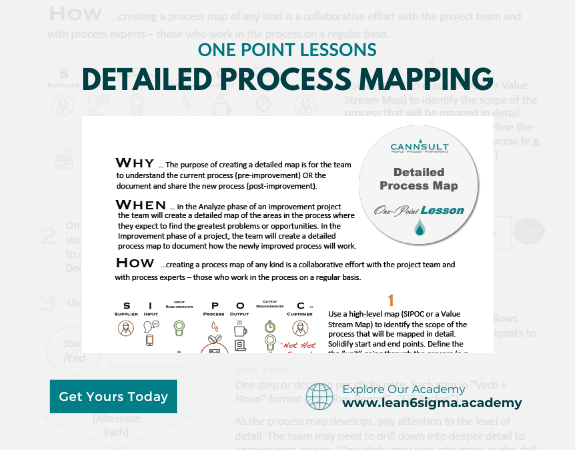Detailed process map
Data Analysis
Analyze and Optimize processes
Streamlined Processes
Process mapping
Step-by-step mapping
Process Improvement
Detailed process mapping is a systematic method for thoroughly documenting, analyzing, and improving complex processes to enhance efficiency and quality.
Description:
Detailed process mapping is a technique used to create comprehensive visual representations of processes, workflows, or procedures. It helps organizations understand, document, and optimize intricate processes by breaking them down into detailed steps.
Steps:
Select the Process: Choose the specific process or workflow you want to map. Ensure that the process is well-understood and defined.
Identify Stakeholders: Identify the key stakeholders or team members who are involved in the process. Collaborative input is valuable for accurate mapping.
Begin with the Start and End Points: Clearly define the start and end points of the process. These points represent the entry and exit criteria for the process.
Document Each Step:
Sequentially document each step or activity within the process.
Include details such as who performs the step, what tools or resources are used, and any relevant timeframes or dependencies.
Capture Inputs and Outputs:
Record what inputs or information are required to initiate each step. Document the expected outputs or results from each step.
Use Standard Symbols: Employ standardized process mapping symbols to represent activities, decisions, data flows, and more. This enhances clarity and consistency.
Include Decision Points: If there are decision points within the process (where different paths or choices can be taken), clearly document these and the criteria for decision-making.
Gather Data: Collect data on process performance, such as cycle times, error rates, or resource utilization, as appropriate.
Analyze and Optimize: Review the process map to identify bottlenecks, redundancies, and areas for improvement. Seek input from stakeholders.
Implement Improvements: Based on your analysis, implement changes to the process. Monitor and measure the impact of these improvements.
Benefits:
Comprehensive process documentation
Visual clarity and understanding
Identification of improvement opportunities
Enhanced quality and efficiency
Key Takeaway:
Detailed process mapping is a systematic approach to understanding and optimizing complex processes. It provides a clear visual representation that aids in identifying inefficiencies and driving continuous improvement.

0 Reviews
Riaan is a dynamic leader, coach, facilitator, Lean Six Sigma Master Black Belt with over 20 years of hands-on experience driving business results. Riaan is highly skilled and has worked across diverse industries internationally. With a degree in Chemical Engineering, Riaan started in the major breweries and bakeries in South Africa and was so dedicated to his work that he was often known to take his work home with him.
